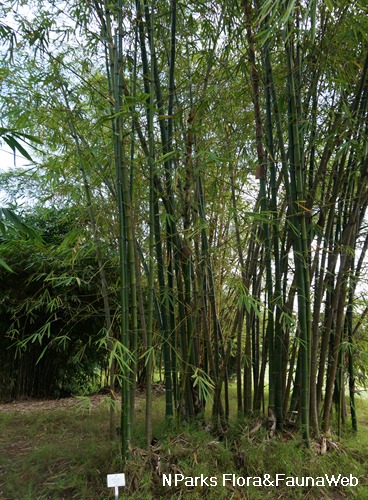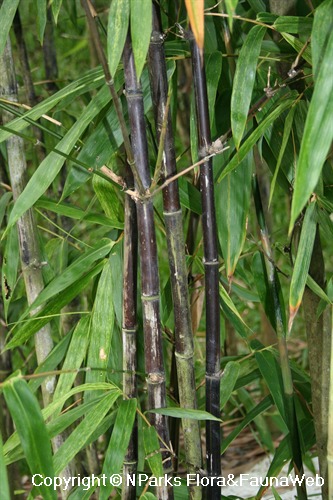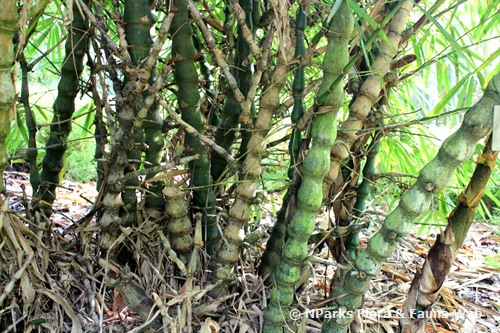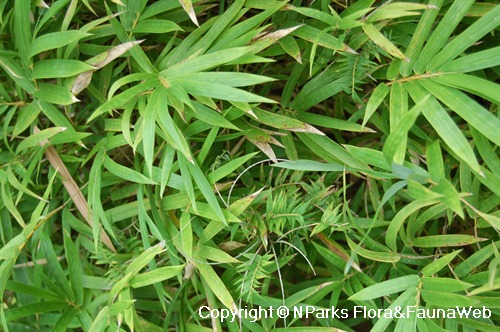
Back
Bambusa vulgaris 'Striata'
| Family Name: | Poaceae (Gramineae) |
| Synonyms: | Bambusa v. var. striata |
| Common Name: | Ivory Bamboo, Buluh Gading, Stripe Bamboo |
Name
Classifications and Characteristics
| Plant Division | Angiosperms (Flowering Seed Plants) (Monocotyledon) |
|---|---|
| Plant Growth Form | Shrub |
| Lifespan (in Singapore) | Perennial |
| Mode of Nutrition | Autotrophic |
| Maximum Height | 15 m |
Biogeography
| Native Distribution | China, S.E.A |
|---|
Description and Ethnobotany
| Growth Form | Clump-forming bamboo that grows up to 15 m tall. |
|---|---|
| Foliage | Linear leaves (up to 20 cm long and 3 cm wide) are arranged in a fan-shaped pattern at the branch tips. They are sharply pointed with rounded base and entire leaf margin. |
| Stems | Culms (8-10 cm wide) are bright yellow with dark green, vertical stripes that are usually narrow, but vary in width. |
| Cultivation | This cultivar requires well-drained soil and grows well in containers. It grows best when protected from the wind. |
Landscaping Features
| Desirable Plant Features | Ornamental Stems |
|---|---|
| Landscape Uses | Interiorscape/ Indoor Plant, Container Planting |
| Thematic Landscaping | Zen / Minimalist Garden |
Plant Care and Propagation
| Light Preference | Full Sun |
|---|---|
| Water Preference | Moderate Water |
| Rootzone Tolerance | Well-Drained Soils |
| Propagation Method | Stem Cutting, Division |
| Planting Distance | 2 m to 3 m |
Foliar
| Mature Foliage Colour(s) | Green |
|---|---|
| Foliar Type | Simple / Unifoliate |
| Foliar Arrangement Along Stem | Alternate |
| Foliar Attachment to Stem | Petiolate |
| Foliar Shape(s) | Non-Palm Foliage |
| Foliar Venation | Parallel |
| Foliar Margin | Entire |
| Foliar Apex - Tip | Acuminate |
| Typical Foliar Area | Mesophyll ( 45cm2 - 182.25 cm2 ) |
| Leaf Area Index (LAI) for Green Plot Ratio | 3.5 (Shrub & Groundcover - Monocot) |
Image Repository
Others
| Master ID | 419 |
|---|---|
| Species ID | 1715 |
| Flora Disclaimer | The information in this website has been compiled from reliable sources, such as reference works on medicinal plants. It is not a substitute for medical advice or treatment and NParks does not purport to provide any medical advice. Readers should always consult his/her physician before using or consuming a plant for medicinal purposes. |







